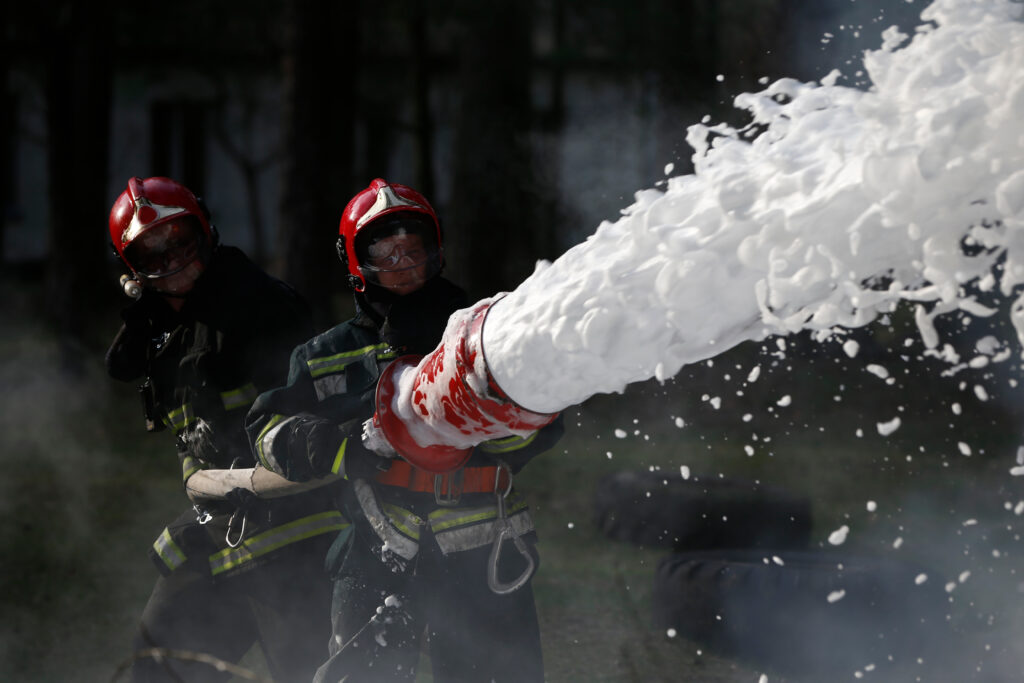In 1902, Russian engineer and chemist Aleksandr Loran spearheaded the development of the first firefighting foam. Loran’s innovative solution addressed the inefficiencies of water in combating oil and flammable liquid-based fires.

NRL and 3M Collaboration in the 1960s
Delving into the 1960s, the Naval Research Laboratory (NRL) collaborated with the 3M Company to enhance firefighting foams. Synthetic chemicals, specifically Perfluoroalkyl and polyfluoroalkyl substances (PFAS), paved the way for the formulation of the Aqueous Film-Forming Foam (AFFF) using 3M’s PFOA and PFOS.
AFFF, comprising fluorocarbons, surfactants, and solubilizers, emerged as a revolutionary firefighting tool. Its fluorochemical-based surfactant created an aqueous film, suppressing vapors, depriving fuel of oxygen, and preventing reignition. This breakthrough became pivotal in crash rescue firefighting, leading to a 1966 patent for NRL and mass production by 3M.
Widening Adoption in the Military and Civilian Sectors
The late 1960s witnessed the U.S. Navy mandating AFFF on all vessels, and by the 1970s, the Department of Defense adopted it across military installations. AFFF’s widespread use extended to over 90 U.S. airports and numerous civilian fire departments by the late 1970s.
While 3M initially dominated fluorochemical-based AFFF production, subsequent manufacturers incorporated telomer-based surfactants. The mid-1970s saw the development of alcohol-resistant (AR) foams, broadening firefighting foam applications to address fires caused by water-soluble solvents.
Class B and Class A Foams: Tailored Solutions
Class B foams target flammable or combustible fuel fires, while the 1980s brought about the development of Class A foams for wildfires and combustibles like wood and paper. The surfactants in Class A foams exhibit a unique affinity for carbon, enhancing penetration into burning combustibles.
Hidden Dangers of Firefighting Foam
Over the last decade, researchers have found that firefighting foam containing PFAS chemicals is harmful to human health and the environment. DuPont and 3M manufactured foams with PFOS and PFOA, causing contamination of property and public water supplies. Additionally, firefighters sustained exposure to the foam through occupation use. The EPA acknowledges these PFAS chemicals within firefighting foam cause various diseases including kidney and testicular cancer. Injured parties have filed lawsuits against the chemical manufacturers and distributors.




